Milwaukee M18 2635-22 Handleiding
Milwaukee
Niet gecategoriseerd
M18 2635-22
Bekijk gratis de handleiding van Milwaukee M18 2635-22 (7 pagina’s), behorend tot de categorie Niet gecategoriseerd. Deze gids werd als nuttig beoordeeld door 33 mensen en kreeg gemiddeld 4.4 sterren uit 17 reviews. Heb je een vraag over Milwaukee M18 2635-22 of wil je andere gebruikers van dit product iets vragen? Stel een vraag
Pagina 1/7

Cat. No. / No de cat.
2635-20, 2636-20, 2637-20
M18TM CORDLESS SHEARS
CISAILLES M18TM
CIZALLAS M18TM
OPERATOR'S MANUAL
MANUEL de L'UTILISATEUR
MANUAL del OPERADOR
WARNING To reduce the risk of injury, user must read and understand operator's manual.
AVERTISSEMENT An de réduire le risque de blessures, l'utilisateur doit lire et bien
comprendre le manuel.
ADVERTENCIA Para reducir el riesgo de lesiones, el usuario debe leer y entender el manual.

2
GENERAL POWER TOOL
SAFETY WARNINGS
WARNING
Read all safety warnings, instruc-
tions, illustrations and specica-
tions provided with this power tool. Failure to
follow all instructions listed below may result in
electric shock, re and/or serious injury. Save all
warnings and instructions for future reference.
The term "power tool" in the warnings refers to your
mains-operated (corded) power tool or battery-oper-
ated (cordless) power tool.
WORK AREA SAFETY
• Keep work area clean and well lit. Cluttered or
dark areas invite accidents.
• Do not operate power tools in explosive atmo-
spheres, such as in the presence of ammable
liquids, gases or dust. Power tools create sparks
which may ignite the dust or fumes.
• Keep children and bystanders away while operat-
ing a power tool. Distractions can cause you to lose
control.
ELECTRICAL SAFETY
• Power tool plugs must match the outlet. Never
modify the plug in any way. Do not use any
adapter plugs with earthed (grounded) power
tools. Unmodied plugs and matching outlets will
reduce risk of electric shock.
• Avoid body contact with earthed or grounded
surfaces, such as pipes, radiators, ranges and
refrigerators. There is an increased risk of electric
shock if your body is earthed or grounded.
• Do not expose power tools to rain or wet condi-
tions. Water entering a power tool will increase the
risk of electric shock.
• Do not abuse the cord. Never use the cord for
carrying, pulling or unplugging the power tool.
Keep cord away from heat, oil, sharp edges or
moving parts. Damaged or entangled cords increase
the risk of electric shock.
• When operating a power tool outdoors, use an
extension cord suitable for outdoor use. Use of
a cord suitable for outdoor use reduces the risk of
electric shock.
• If operating a power tool in a damp location is
unavoidable, use a ground fault circuit interrupter
(GFCI) protected supply. Use of an GFCI reduces
the risk of electric shock.
PERSONAL SAFETY
• Stay alert, watch what you are doing and use
common sense when operating a power tool. Do
not use a power tool while you are tired or under
the inuence of drugs, alcohol or medication. A
moment of inattention while operating power tools
may result in serious personal injury.
• Use personal protective equipment. Always
wear eye protection. Protective equipment such
as a dust mask, non-skid safety shoes, hard hat or
hearing protection used for appropriate conditions
will reduce personal injuries.
• Prevent unintentional starting. Ensure the switch
is in the o-position before connecting to power
source and/or battery pack, picking up or carrying
the tool. Carrying power tools with your nger on
the switch or energizing power tools that have the
switch on invites accidents.
• Remove any adjusting key or wrench before
turning the power tool on. A wrench or a key left
attached to a rotating part of the power tool may
result in personal injury.
• Do not overreach. Keep proper footing and
balance at all times. This enables better control
of the power tool in unexpected situations.
• Dress properly. Do not wear loose clothing or
jewelry. Keep your hair and clothing away from
moving parts. Loose clothes, jewelry or long hair
can be caught in moving parts.
• If devices are provided for the connection of
dust extraction and collection facilities, ensure
these are connected and properly used. Use of
dust collection can reduce dust-related hazards.
• Do not let familiarity gained from frequent use
of tools allow you to become complacent and
ignore tool safety principles. A careless action can
cause severe injury within a fraction of a second.
POWER TOOL USE AND CARE
• Do not force the power tool. Use the correct power
tool for your application. The correct power tool
will do the job better and safer at the rate for which
it was designed.
• Do not use the power tool if the switch does not
turn it on and o. Any power tool that cannot be
controlled with the switch is dangerous and must be
repaired.
• Disconnect the plug from the power source and/
or remove the battery pack, if detachable, from
the power tool before making any adjustments,
changing accessories, or storing power tools.
Such preventive safety measures reduce the risk of
starting the power tool accidentally.
• Store idle power tools out of the reach of children
and do not allow persons unfamiliar with the
power tool or these instructions to operate the
power tool. Power tools are dangerous in the hands
of untrained users.
• Maintain power tools and accessories. Check
for misalignment or binding of moving parts,
breakage of parts and any other condition that
may aect the power tool’s operation. If damaged,
have the power tool repaired before use. Many
accidents are caused by poorly maintained power
tools.
• Keep cutting tools sharp and clean. Properly
maintained cutting tools with sharp cutting edges
are less likely to bind and are easier to control.
• Use the power tool, accessories and tool bits
etc. in accordance with these instructions,
taking into account the working conditions and
the work to be performed. Use of the power tool
for operations dierent from those intended could
result in a hazardous situation.
• Keep handles and grasping surfaces dry, clean
and free from oil and grease. Slippery handles and
grasping surfaces do not allow for safe handling and
control of the tool in unexpected situations.
BATTERY TOOL USE AND CARE
• Recharge only with the charger specied by the
manufacturer. A charger that is suitable for one type
of battery pack may create a risk of re when used
with another battery pack.
• Use power tools only with specically designated
battery packs. Use of any other battery packs may
create a risk of injury and re.

6
LIMITED WARRANTY - MEXICO,
CENTRAL AMERICA & CARIBBEAN
TECHTRONIC INDUSTRIES' warranty is for 5 years since the original
purchase date.
This warranty card covers any defect in material and workmanship
on this Product.
To make this warranty valid, present this warranty card, sealed/
stamped by the distributor or store where you purchased the product,
to the Authorized Service Center (ASC). Or, if this card has not been
sealed/stamped, present the original proof of purchase to the ASC.
Call toll-free1 01 (800) 030-7777 to nd the nearest ASC, for service,
parts, accessories or components.
Procedure to make this warranty valid
Take the product to the ASC, along with the warranty card sealed/
stamped by the distributor or store where you purchased the product,
and any faulty piece or component will be replaced without cost for
you. We will cover all freight costs relative with this warranty process.
Exceptions
This warranty is not valid in the following situations
a) When the product is used in a dierent manner from the end-user
guide or instruction manual.
b) When the conditions of use are not normal.
c) When the product was modied or repaired by people not authorized
by TECHTRONIC INDUSTRIES.
Note: If cord set is damaged, it should be replaced by an Authorized
Service Center to avoid electric risks.
SERVICE AND ATTENTION CENTER
Call to 01 (800) 030-7777
IMPORTED AND COMMERCIALIZED BY
TECHTRONIC INDUSTRIES MEXICO, SA DE CV
Av President Masarik #29 piso 7, Col. Polanco V Sección
CP 11560, Deleg. Miguel Hidalgo, CDMX
Model:
Date of Purchase:
Distributor or Store Stamp:
RÈGLES DE SÉCURITÉ GÉNÉRALES
RELATIVES AUX OUTILS ÉLECTRIQUES
AVERTISSEMENT
Lire toutes les consignes
de sécurité, consignes,
illustrations et spécications fournies avec cet
outil électrique. Ne pas suivre l’ensemble des règles
et instructions peut entraîner une électrocution, un
incendie ou des blessures graves. Conserver les
règles et les instructions à des ns de référence
ultérieure. Le terme «outil électrique» gurant dans
les avertissements ci-dessous renvoie à l’outil élec-
trique à alimentation par le réseau (à cordon) ou par
batterie (sans l).
SÉCURITÉ DU LIEU DE TRAVAIL
• Veillez à ce que l’aire de travail soit propre et
bien éclairée. Le désordre et le manque de lumière
favorisent les accidents.
• Ne pas utiliser d’outils électriques dans des at-
mosphères explosives, par exemple en présence
de liquides, gaz ou poussières inammables. Les
outils électriques produisent des étincelles risquant
d'enammer les poussières ou vapeurs.
• S’assurer que les enfants et les curieux se trou-
vent à une bonne distance au moment d’utiliser
un outil électrique. Les distractions peuvent causer
une perte de contrôle.
SÉCURITÉ ÉLECTRIQUE
• Les ches des outils électriques doivent cor-
respondre à la prise secteur utilisée. Ne jamais
modier la che, de quelque façon que ce soit.
Ne jamais utiliser d'adaptateurs de che avec
des outils mis à la terre. Les ches et prises non
modiées réduisent le risque de choc électrique.
• Éviter tout contact avec des surfaces mises à
la terre comme des tuyaux, des radiateurs, des
cuisinières et des réfrigérateurs. Le risque de
choc électrique est accru lorsque le corps est mis
à la terre.
• Ne pas exposer les outils électriques à l'eau ou
l'humidité. La pénétration d’eau dans ces outils
accroît le risque de choc électrique.
• Ne pas maltraiter le cordon d'alimentation.
Ne jamais utiliser le cordon d’alimentation
pour transporter l’outil électrique et ne jamais
débrancher ce dernier en tirant sur le cordon.
Garder le cordon à l'écart de la chaleur, de
l'huile, des objets tranchants et des pièces en
mouvement. Un cordon endommagé ou emmêlé
accroît le risque de choc électrique.
• Pour les travaux à l’extérieur, utiliser un cordon
spécialement conçu à cet eet. Utiliser un cordon
conçu pour l'usage extérieur réduit les risques de
choc électrique.
• Si l’utilisation d’un outil électrique est inévitable
dans un endroit humide, utiliser une source
d’alimentation munie d’un disjoncteur de fuite
de terre. L’utilisation d’un disjoncteur de fuite de
terre réduit le risque de choc électrique.
Product specificaties
| Merk: | Milwaukee |
| Categorie: | Niet gecategoriseerd |
| Model: | M18 2635-22 |
Heb je hulp nodig?
Als je hulp nodig hebt met Milwaukee M18 2635-22 stel dan hieronder een vraag en andere gebruikers zullen je antwoorden
Handleiding Niet gecategoriseerd Milwaukee
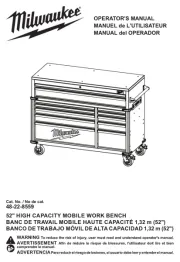
21 Juli 2025
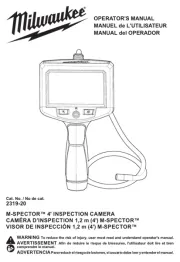
21 Juli 2025
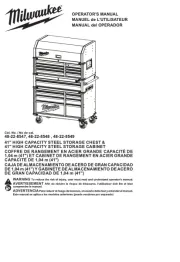
21 Juli 2025
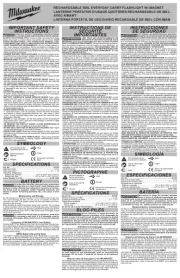
15 Juli 2025
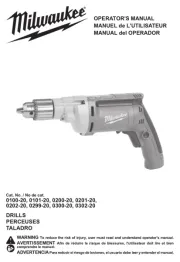
15 Juli 2025

15 Juli 2025
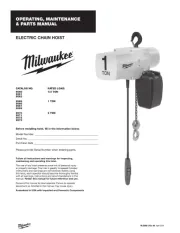
15 Juli 2025
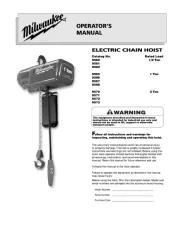
15 Juli 2025
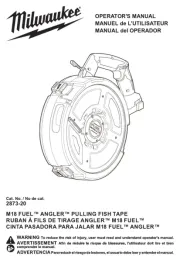
15 Juli 2025
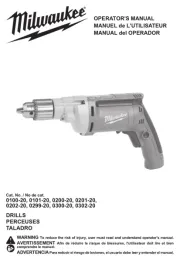
15 Juli 2025
Handleiding Niet gecategoriseerd
- Falmec
- Coravin
- Rowenta
- M-Audio
- IDIS
- Lauten Audio
- Genexis
- Huzaro
- DCS
- Silvercrest
- Eldat
- KED
- Amfra
- AtomoSynth
- Wharfedale
Nieuwste handleidingen voor Niet gecategoriseerd
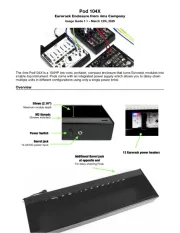
2 Augustus 2025
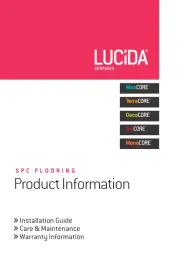
2 Augustus 2025
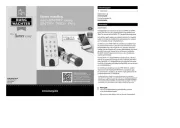
2 Augustus 2025
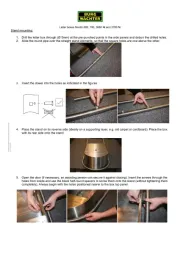
2 Augustus 2025
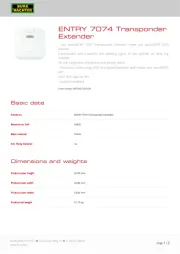
2 Augustus 2025
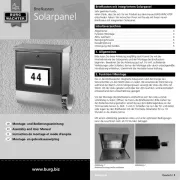
2 Augustus 2025
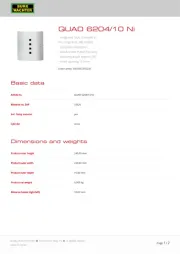
2 Augustus 2025
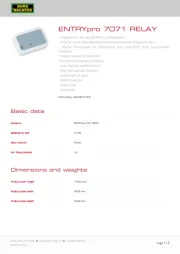
2 Augustus 2025
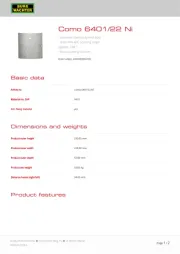
2 Augustus 2025
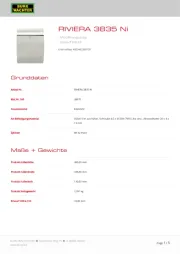
2 Augustus 2025